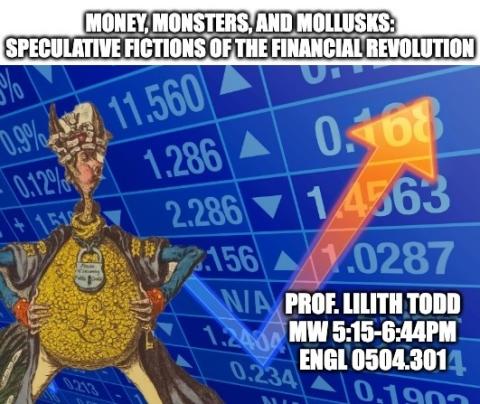Money, Monsters, and Mollusks: Speculative Fictions of the Financial Revolution
How do we imagine worlds we’ve never been to? What can imagining other worlds reveal about the one we inhabit? How does literature facilitate these imaginative exercises? These are questions raised by science fiction – in which authors envision alien life, planets, or alternative histories – but these questions were also raised by an emerging literature of colonial and financial speculation in eighteenth-century England. Just as post-war industrialism and the space race inspired writers to imagine what life could be ‘out there’, new industries in the eighteenth century spurred authors to speculate on the life and the value of the “New World.” People living in Britain purchased and invested in land, things, and – most troublingly – in people they had never seen across the Atlantic Ocean. They did so on such a scale and through new techniques – such as bills of exchange, transferable shares of companies, and debt purchasing – that this period has also been called “the financial revolution.” The “New World” was then a setting for English authors to imagine “strange” new ways of living (sometimes acknowledging and often erasing the people already living there), and it was the source of potential and real value that fueled financial speculation. In this class, we will read various speculative fictions – from the past and the present – in order to understand how literature helps us sustain and critique complex and long-form fictions that materially impact our real worlds. With the eighteenth century as our magnetic pole, we will jump around in time, and readings will include Gulliver’s Travels (1726), You Dreamed of Empires (2024), and Frankenstein (1818) alongside poems that imagine the “life” of money, natural histories of plants and animals, and allegorical accounts of the first financial crash. Assignments will ask you to write two papers and conduct informal primary text research.

 Department of English
Department of English
